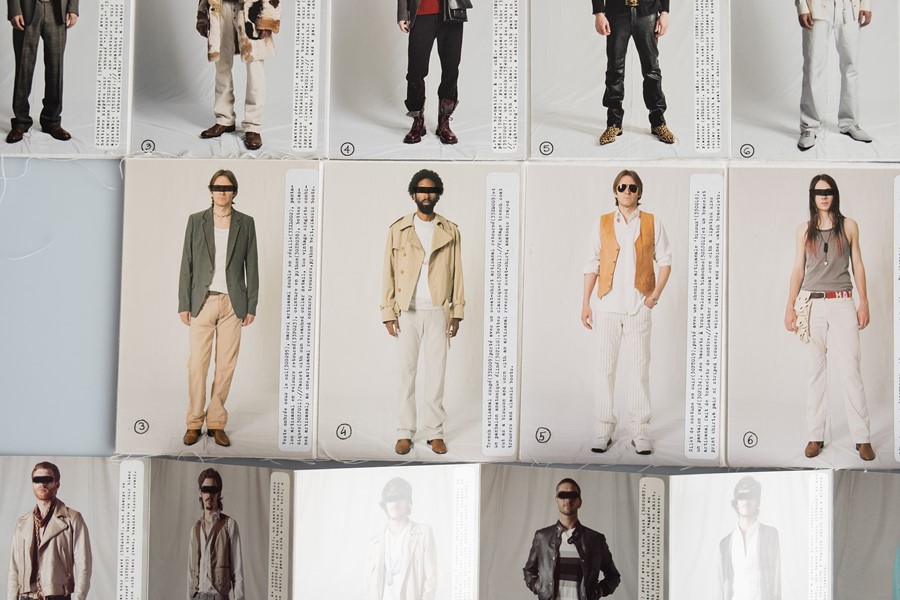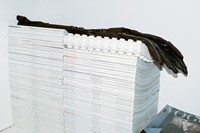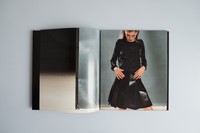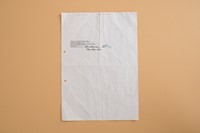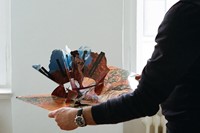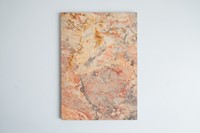From iconic pieces of Raf Simons to early Comme des Garçons and 90s Gaultier, take a look inside the auction catalogue of curator and concept store founder Andreas Murkudis
The word ‘curation’ is bandied about with wanton excess in the fashion world. But in reference to art-curator-turned-concept-store-creator Andreas Murkudis – the man behind no fewer than nine Germany-based stores filled with exquisite fashion and artefacts – the Tabi boot fits. Responsible for bringing the likes of Céline, Dries Van Noten and Yohji Yamamoto to unique spaces, from empty courtyards in Mitte to former newspaper printers, Murkudis’ career spans some of the greatest landmark moments in fashion history – a storied tenure that he intends to celebrate with the launch of his new website. As his eponymous store ventures online for the first time – with a carefully chosen 99 piece capsule collection – Murkudis launches the first of four auctions offering up some of his greatest acquisitions. From a faux fax invitation to Helmut Lang’s S/S97 show to a handmade top from Maison Martin Margiela’s first collection, Artisanal, in 1988, this array of collectables will have any fashion archivist out in cold sweats.
“These objects have been dear to my heart for around over 30 years now, and it is almost a didactic mission to share these pieces of fashion history with a bigger audience,” Murkudis told us about parting with these treasures. “Every item in the auction is connected to a personal story. As with any beloved object, at some point, you need to start sharing them to create space for new memories and I feel that there is so much more to seek and find: I am on a constant search for beauty.” We asked Murkudis to talk us through five of his most precious objects as the first wave of 15 items hit the online auction block at 6pm today.
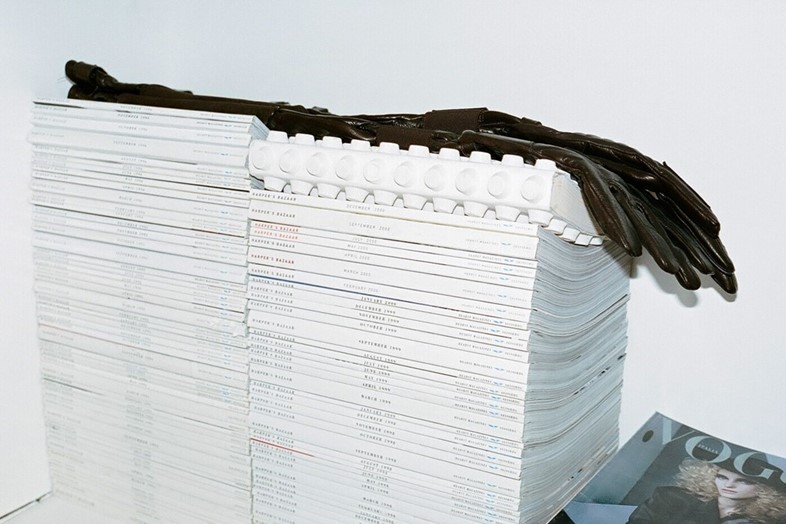
On the Raf Simons gauntlet gloves...
“I went to the Fall/Winter 2007 Raf Simons menswear show, back when he was not yet the established designer he is today. I saw the gloves on stage and was immediately intrigued by their refined design: the buttery-soft leather and the meticulous details of the hand-crafted piece. Inspired by a knight’s armour, they almost reach up to the middle of the upper arm. I ordered one pair of the gloves for the store back then as they were produced in limited quantities at the original price of €2500; as they didn’t get sold, I kept them for myself. I have never worn them, but grew very fond of them. Now, I've decided to pass them on to somebody who will appreciate them as much as I do and maybe will even start wearing them.”

On the Comme des Garçons S/S85 invite...
“Invites for fashion-défilés in the 80s were always very preppy and pretty, if not even ostentatious and glamorous. The CdG invite from 1985 was for this time not only very unusual, but visionary. It was printed on a big sheet of oil-paper – an act of minimalism which almost seemed, if it was misunderstood, trivial. Their show at the Tuileries marked a turning point: until then it was normal for the models to walk down a runway and smile before they turned around to walk back. At this show, Comme des Garçons introduced the stoic gaze: a deep concentration, walking down the runway with no emotions – something which is still carrying on today.”
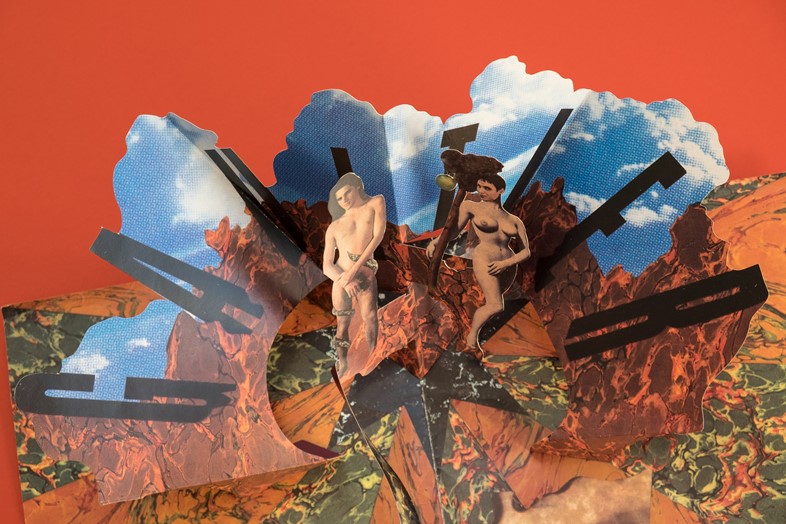
On the Adam and Eve pop-up S/S91 Jean Paul Gaultier invite...
“20 years ago, fashion shows didn’t have the audience as they have today – there were far fewer people invited. I remember that me and my brother sometimes stormed into shows because we had no invites; sometimes we were lucky and we did not get caught, sometimes not. This also explains why the invites were designed with so much detail and they just had a very high personal value for me. The show to which the Gaultier invite belongs, from 1991, was the complete opposite [to the Comme des Garçons 85] but none the less fantastic,” Murkudis explains of the utterly outré performance, set in a 90s clubland alternative to the Garden of Eden, where Madonna sat front row, Gaultier’s grandmother walked, models emerged in couples, dancing and kissing, and actress Rossy de Palma closed the show in a black puffball gown. “It was really Gaultier’s best show ever and the invite is an artwork in itself.”
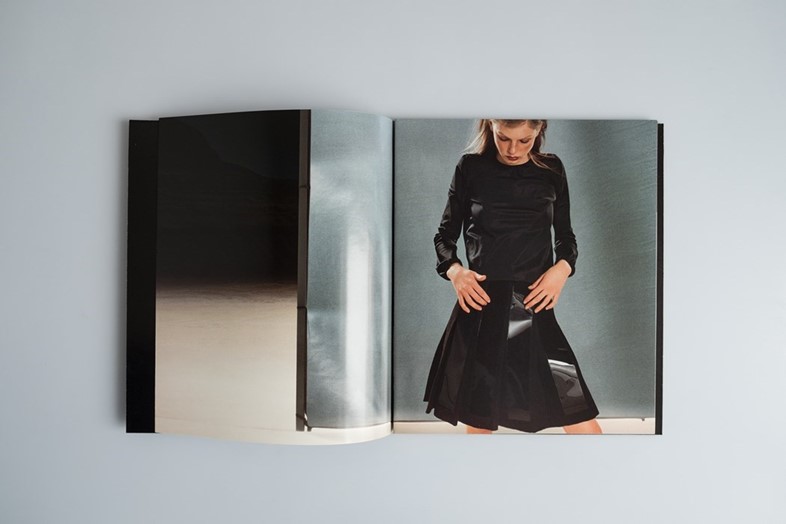
On his vast collection of photo-books...
“It’s not very easy to create a good book – this I can say because as a museum’s curator [Murkudis directed Berlin’s Museum of Things for 15 years], publishing exhibition catalogues is a daily task, and doing it well is an art in and of itself. A painting, or a photograph is, in its origin, mostly not taken to be published in a book: it’s an abstract caption of a moment. I’ve collected photographs for such a long time that, when a book is done well, I just really appreciate it. Most of these books are published in very small editions, I collected them to preserve them too. Some of those photographers, like Mitch Epstein, are my friends – and for the auction they’ve signed the books as well, which is very special to me. I normally keep these items in my archive, and some of them even at my office, so all the time I’m surrounded by them and feel their beauty.”

On issue two of SIX Magazine...
Published between 1988 and 1991, Rei Kawakubo commissioned Tsuguyua Inoue to art direct and Atsuko Kozasu to edit eight editions of Comme des Garçons’ promo magazine, SIX – the set of which would now set you back upwards of £2000. Contributors such as Bruce Weber, Peter Lindbergh and Gilbert and George filled the unbound, A3 pages of this revolutionary commercial showcase, of which only ten were printed. “I collected these objects with passion and often bought two or more pieces of the things I liked – almost as if I anticipated wanting to share them at some point. Many pieces are connected to personal memories, such as the time when it was difficult to get invites to fashion shows or to get your hands on a Comme des Garçons SIX magazine – which still work as references for any well-done brand magazine today.”
Andreas Murkudis’ auctions will take place from April 7–30, 2017, on his website.
